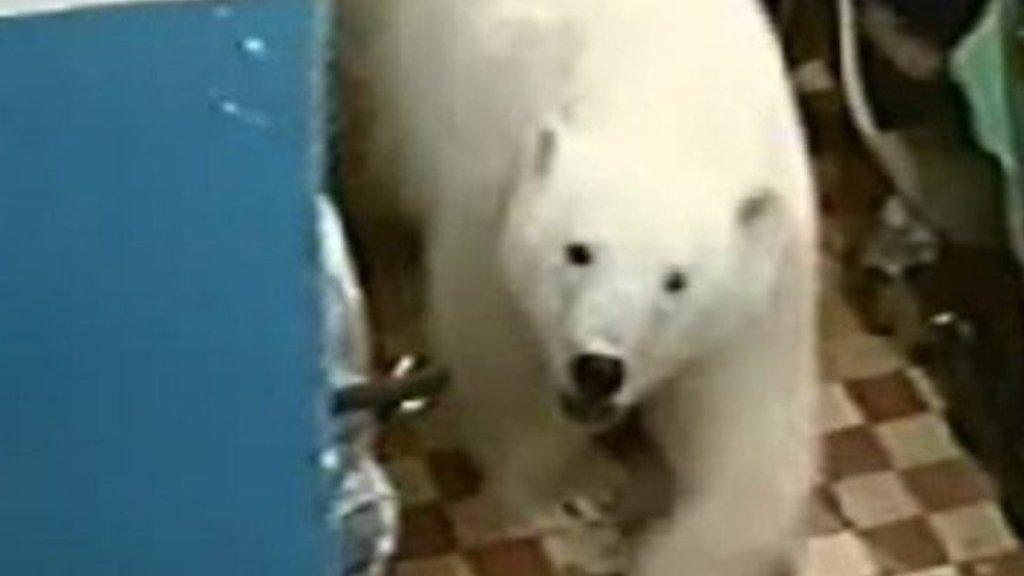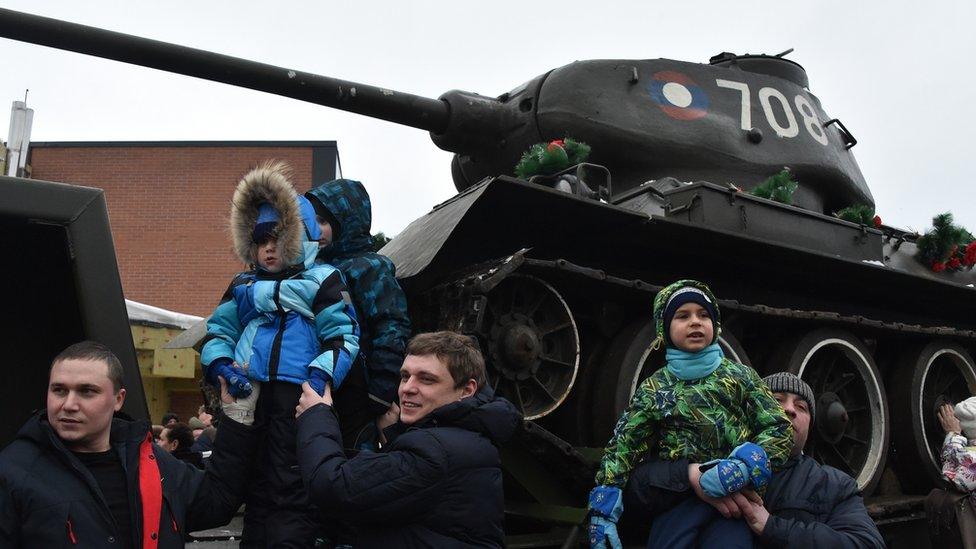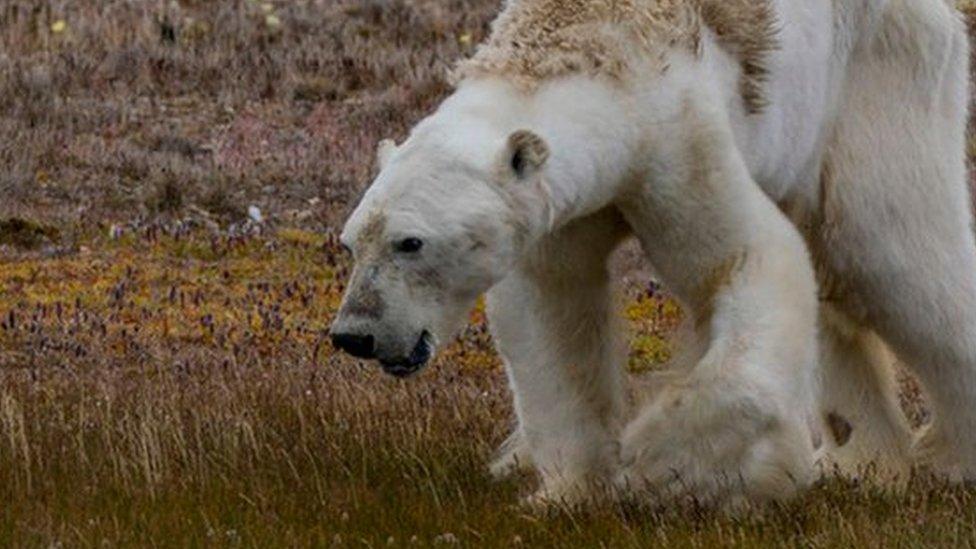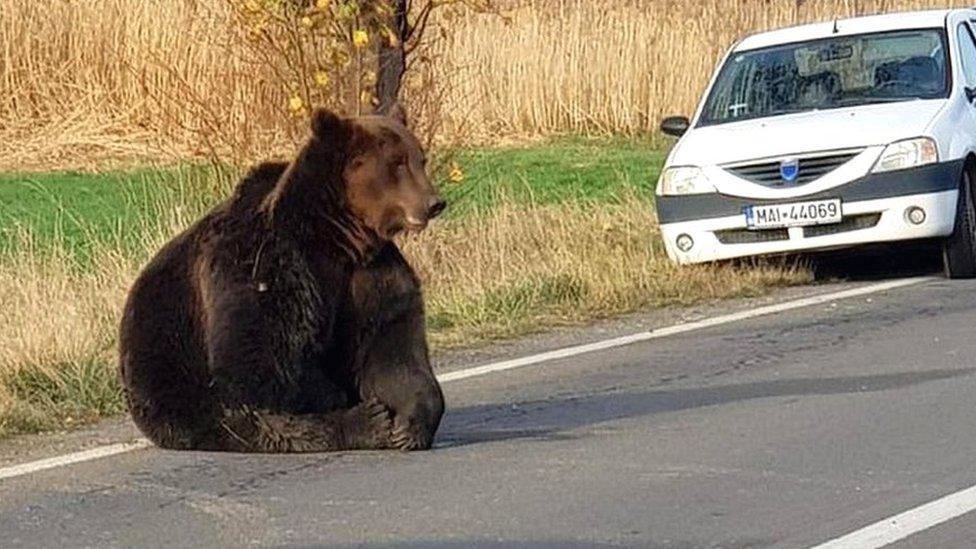Polar bear spray-painted with 'T-34' baffles Russia wildlife experts
- Published

Video of the polar bear posted on Facebook has led to fears for its wellbeing
Footage shared on social media in Russia of a polar bear with "T-34" spray-painted in black on its side has alarmed experts.
Experts warned the stunt could affect the animal's ability to blend in with its surroundings and hunt for food.
An investigation is under way to determine exactly where in Arctic Russia the video was filmed.
The T-34 was a tank that played a vital role in the Soviet Union's defeat of Nazi Germany in World War Two.
The footage was posted on Facebook by Sergey Kavry, a member of the World Wildlife Fund (WWF) nature organisation, and then shared by local media.
Allow Instagram content?
This article contains content provided by Instagram. We ask for your permission before anything is loaded, as they may be using cookies and other technologies. You may want to read Meta’s Instagram cookie policy, external and privacy policy, external before accepting. To view this content choose ‘accept and continue’.

Mr Kavry said the video had been shared with a WhatsApp group for the indigenous people of the Chukotka region in Russia's Far East, and that scientists monitoring wildlife in the area would not have branded the bear in such a way.
"I don't know the details of which region, district, or vicinity this [footage] was taken," he said, adding: "If it's a military lettering theme... that is some kind of perverse disrespect for history."
The press officer for WWF Russia, Daria Buyanova, told the BBC that seeing the images was "quite a shock" and that the inscription "looks like a bad joke".
A scientist at the Institute of Biological Problems of the North, Anatoly Kochnev, said it was unlikely that the bear could have been painted without it being sedated.
He said the bear could not have been mobile, or at least must have been quite still while it was being sprayed because "the characters are evenly written and are all the same size".
He suggested the incident may have taken place in the remote Russian region of Novaya Zemlya, where a team of specialists had earlier sedated polar bears that had been wandering into populated areas.
Mr Kochnev said it could take weeks for the markings to wash off, and this could cause problems for the animal, which relies on its white coat when hunting prey in the Arctic snow and ice.
Experts are now trying to determine the origin of the video.
Russian media speculated that the stunt was linked to local anger at a rise in the number of polar bears coming into communities in Arctic Russia.
In February, a state of emergency was declared in the Novaya Zemlya region over the appearance of dozens of polar bears in several towns and villages in the Arctic.
Footage from the archipelago showed the animals roaming through buildings and exploring populated areas.
Why polar bears are invading human settlements in Russia

You might also be interested in:
- Published11 February 2019

- Published21 January 2019

- Published12 December 2017

- Published21 November 2019
